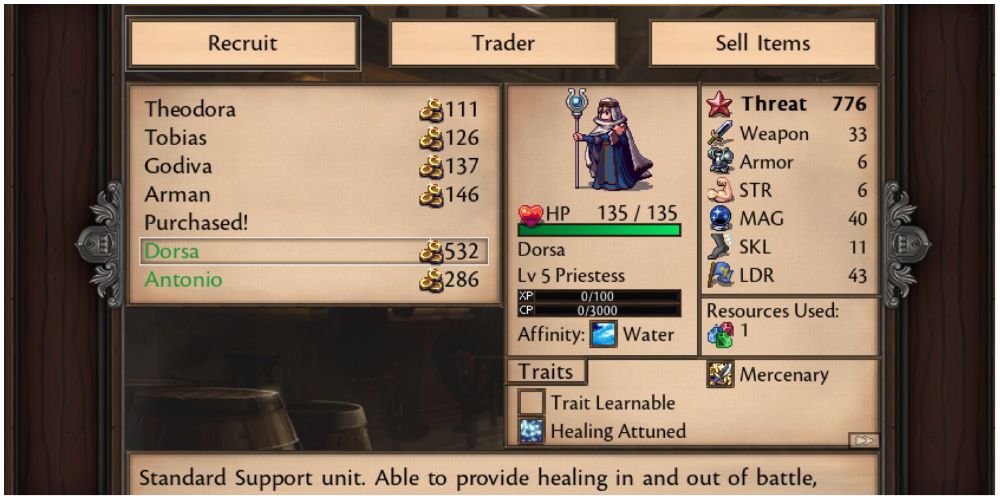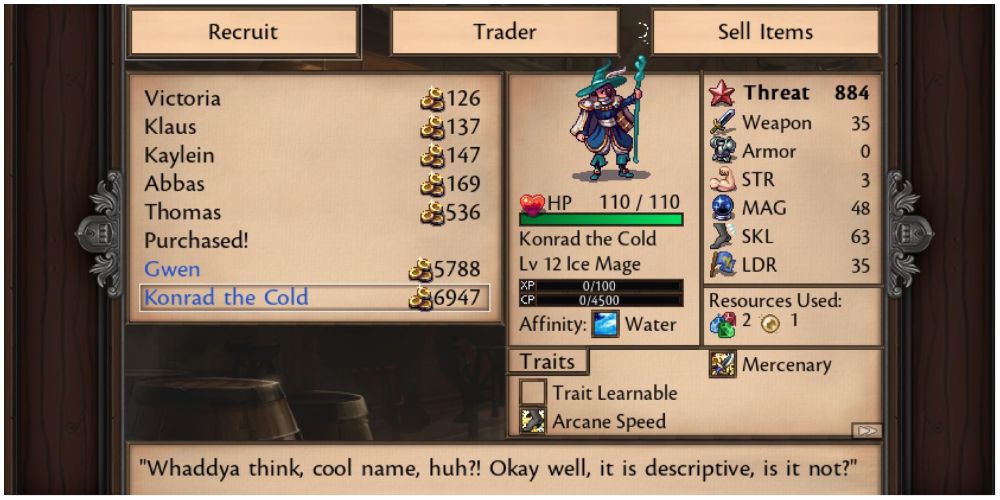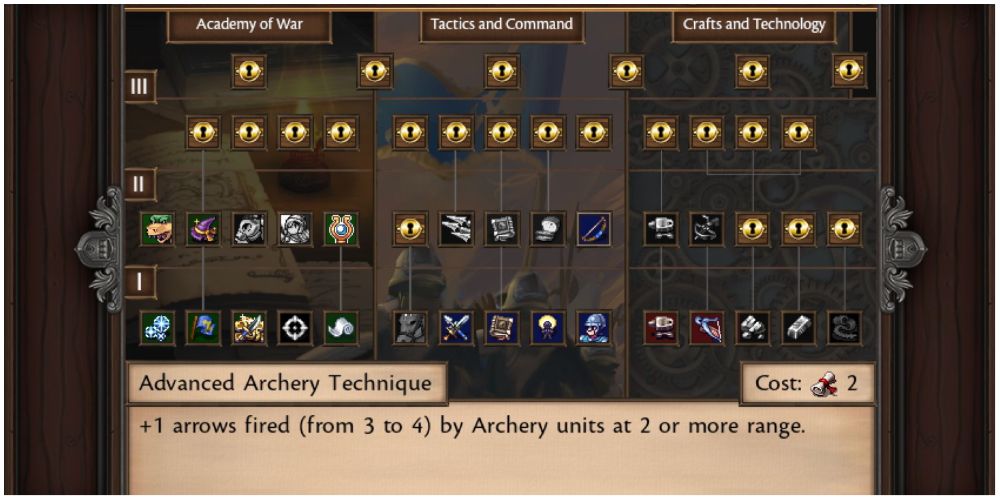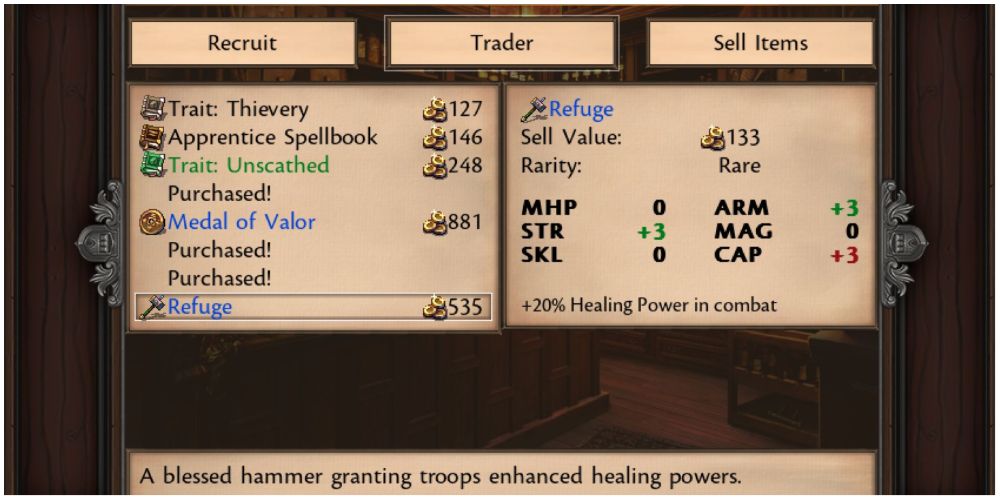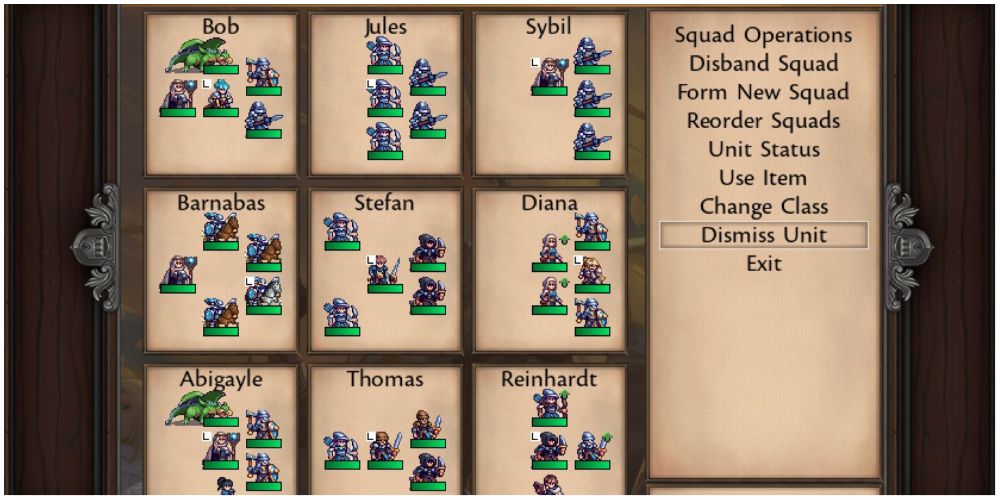Quick Links
While it may look a little cutesy, Symphony of War: The Nephilim Saga is a deep and complex tactical fantasy RPG. To fight your way through all 30 chapters you’re going to need a full understanding of all the game's systems, such as squad composition, Tech Tree options, and Artefact abilities.
It's important to note that while some decisions you make are reversible as the game moves forward, other choices you make early are going to shape the game throughout. Below you’ll find all the information you need to get through the early chapters in great shape, setting yourself up well for the challenges ahead.
Are There Good And Bad Unit Classes?
The most important thing to remember in Symphony of War is that experimentation is half the fun. The devs obviously realised this, as you’ve got lots of leeway to mess with your units. There are 42 different class types, with all basic units being upgradeable several times. The best thing is that in this game, class isn’t permanent.
Once you’ve upgraded a troop, you can demote them later if you don’t like their style. You’ll lose any Class Points (CP) they’ve earned since you promoted them, but they’ll keep their current Experience Points (which help raise their stats) and you’ll get back any resources spent to upgrade them.
The Story
There’s a moment quite early on where the story turns, and some of the units you’ve picked up will be unavailable. Don’t let this stop you investing – they’ll be back soon enough.
Infantry Units
You’re looking at two options here – light or heavy infantry units. There’s little point mixing them in the same squad, as you’ll lose the relative strength of both. Heavy infantry units are simply great at taking damage, which can’t be underestimated. Spearmen aren’t overly well regarded but are very useful in some of the early chapters, which seem to have quite a lot of mounted enemy troops.
Light infantry squads are essentially used for ambushes. Done right, these can be devastating – taking out support and archery units, leaving the rest of the squad vulnerable. But they’re hard to play well, as they’re weak to head-on attacks and tough to keep alive. However, once you know a chapter map and how its units will react to a situation, they can work incredibly well.
Support Units
You’ll want at least one healer in each of your squads as their heals really make a difference. To keep them alive, try to put them in the middle row, which will protect them from ambush attacks that can target your back row units.
Also, remember that Priestess and Medic units can heal between moves. Each unit can heal a unit in their own squad, or one in an adjacent orthogonal square. Each unit gets three of these heals per battle, and they don’t consume anything, so be sure to use them where you need them.
Archery And Magic Units
Most of your squads will benefit from having at least one or two archers in tow. They can attack and counter at range, while placing them in your back row protects your healers if you place the healers in your middle row. But it’s worth having at least one squad that’s all archery – especially if you can make them mounted (see below). Remember they get extra range from higher ground.
You can upgrade Bowman units to Apprentices, who use magic attacks. Or take the Apprentice Training tech to get them from the Marketplace. Apprentices don’t have the range of archery units, but once upgraded to Mage they can attack whole columns of enemies at once for devastating damage.
Mounted Units
Squads with a majority of Mounted Troops have increased movement range, which is nice. But better still is the ability to move both before and after attacking. This is particularly useful for mounted archers, who can immediately move out of range – especially great versus troops defending a castle.
Also, remember that you only need the majority of troops in a squad to be mounted to get the full advantage of being a mounted squad. This means, for example, you shouldn’t have to settle for weaker healing via a Hospitaller (mounted medic) – you can instead upgrade to a Priestess with much better heals.
Dragons And Guns
You’ll get to use your first Dragon in Chapter Five, and Guns even later. Dragons are awesome throughout the game, and you can give yourself a better chance of getting one as early as Chapter Three if you choose Dragon Trainer as your first Tier Two tech (see below).
What Should I Choose On The Tech Tree?
Here are some solid options for Level One Techs to take early on:
- Standing Army: All conscripts start at Level Two and already have half the Class Mastery points they need to be upgraded. A massive help early on.
- Merchant Envoys: This gives you more choices in the Marketplace, both for units and items.
- Battle Medics: Healers get bonus HP, which will help keep them – and everyone else – alive.
- Target Leader: Taking out a squad’s leader will give a big hit to Morale, which reduces attack power – as well as increasing the likelihood of surrender. Consider combining with Psyche Warfare, which means that taking out the squad leader inflicts even more morale loss.
- Apprentice Training: lets you get Basic Magician as recruits, meaning they will always be available in the Marketplace. If you want to go big on magic, this is a nice way to start.
- Adept Artificer: Gives an extra Artefact slot (see below).
Using The Marketplace
Artefacts (Trader) and Troops (Recruit) in the Marketplace are set for your game at the beginning of play. They will change between Chapters, but not if you just reload the game.
Artefacts
Read Artefact descriptions carefully, as some are real game changers. It’s always worth picking up resources, as they’re relatively cheap and needed for most of the better troop upgrades. Some items are used, rather than worn, such as Trait items. Once bought, you’ll need to add them to the unit of your choice via Use Item in the Squad Operations menu.
Troops
Buying advanced troops is a good way to get additional resources, as they come with what they require. They can then be immediately demoted if you need the resource for someone else. Resources can be hard to come by early on, so this is a nice workaround if you’re lacking something you need for an upgrade.
Look out for any advanced units that come with the ‘Captain’ trait, as it reduces the cost of a particular type or unit in that squad. If they also have high LDR, they’re a perfect candidate to lead a squad. There are plenty more fantastic traits added randomly to these advanced units too, so be sure to take a good look at who is available between each battle.
Be careful of stats when buying Basic troops. Look into what stats they need when you advance them if you’re going a certain route. For example, a Soldier needs 25 strength – while a Rogue needs 25 skill. Don't buy low level troops who won't ever have the stats you want for their upgrades.
Squads And Battles
Take a good look at how much LDR your squad leaders have and how you can affect this with Artefacts. One correct combo may mean being able to add a whole extra unit to a squad. Also remember that composition affects squad type, which affects movement and combat. This is set by majority type, so simply replacing one unit could increase their speed or ability to ambush.
Even small weak squads can be useful. They can pick up treasure once the coast is clear, so you don’t have to waste strong units hoovering up the spoils. If you can take six or eight squads into a Chapter, why not do so?
Into Battle
Once you’ve started a battle, you can’t do a normal save – but you can overwrite the quick save.
Don’t worry about losing troops in battles. As long as you win, they’ll be back up and fighting next time – unless you chose Permadeath at the very beginning of your campaign.
Remember that only cavalry troops can move after attacking. Offensively, this means you can attack a unit and move out of the way - allowing a follow-up melee attack. This is great for taking out castles, for example. Surrounding an enemy (on orthogonal sides, not diagonals) will result in you doing more damage.
Finally, check your win requirements at the start of each battle, as they’re not always obvious. Right-click anywhere on the map and choose ‘Mission Info’. This will give you victory and defeat conditions, as well as listing all the challenge bonuses available – which will give you more leadership bonuses. To max this out, there will usually be a listed number of ‘key squads’ that need to be neutralised. These are marked on the map by having a star on them.


